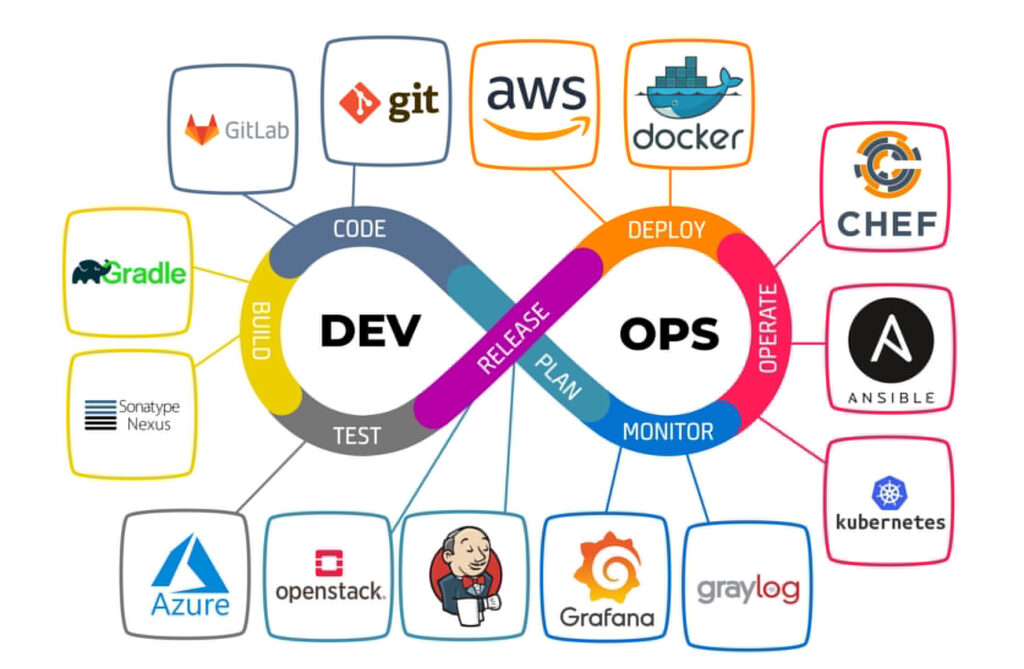Introduction
In the fast-paced world of software development, the need for agility, efficiency, and collaboration has never been greater. Enter DevOps, a groundbreaking approach that has revolutionized the way software is developed, tested, and deployed. In this blog, we will delve into the world of DevOps, exploring its principles, benefits, and its transformative impact on the IT industry.

Understanding DevOps
DevOps is a set of practices that aims to bridge the gap between software development (Dev) and IT operations (Ops). Traditionally, these two teams operated in silos, which often led to communication gaps, delays, and bottlenecks in the software delivery process. DevOps seeks to break down these barriers and create a culture of collaboration and continuous improvement.
Key Principles of DevOps
Collaboration: DevOps encourages collaboration and communication between development, operations, and other stakeholders. This ensures that everyone is on the same page and working towards common goals.
Automation: Automation is at the heart of DevOps. It involves automating repetitive tasks, such as code testing, deployment, and infrastructure provisioning, to increase efficiency and reduce errors.
Continuous Integration (CI)
: CI involves integrating code changes into a shared repository multiple times a day. This helps identify and address issues early in the development process.
Continuous Delivery (CD)
: CD takes CI a step further by automating the deployment of code changes to production or staging environments. This allows for quicker and more reliable releases.
Monitoring and Feedback: DevOps emphasizes continuous monitoring of applications and infrastructure. This feedback loop helps teams identify and address issues in real-time.
Benefits of DevOps
Faster Time-to-Market: DevOps practices accelerate the software development and deployment processes, allowing organizations to release new features and updates more frequently.
Improved Quality: Automation and continuous testing result in fewer bugs and more stable releases, enhancing the overall quality of software.
Increased Collaboration: DevOps promotes collaboration between teams, fostering a culture of shared responsibility and knowledge sharing.
Enhanced Reliability: By monitoring applications and infrastructure continuously, DevOps teams can proactively address issues and improve system reliability.
Cost Efficiency: Automation reduces manual intervention, leading to cost savings and resource optimization.
Implementing DevOps
Implementing DevOps requires a cultural shift within an organization, as well as the adoption of various tools and practices. Here are some steps to get started:
Assessment: Assess your current processes and identify bottlenecks and areas for improvement.
Culture: Foster a culture of collaboration, shared ownership, and continuous improvement.
Automation: Invest in automation tools for code integration, testing, deployment, and infrastructure provisioning.
Monitoring: Implement monitoring and logging solutions to gain real-time insights into your applications and infrastructure.
Training: Provide training and resources to ensure that your teams are equipped with the necessary skills and knowledge.
Conclusion
DevOps is not just a set of practices or tools; it’s a cultural shift that promotes collaboration, automation, and continuous improvement. By breaking down the barriers between development and operations, DevOps has the potential to transform software development and IT operations, making them more efficient, reliable, and responsive to customer needs. As organizations strive to stay competitive in the digital age, embracing DevOps is not an option—it’s a necessity.
